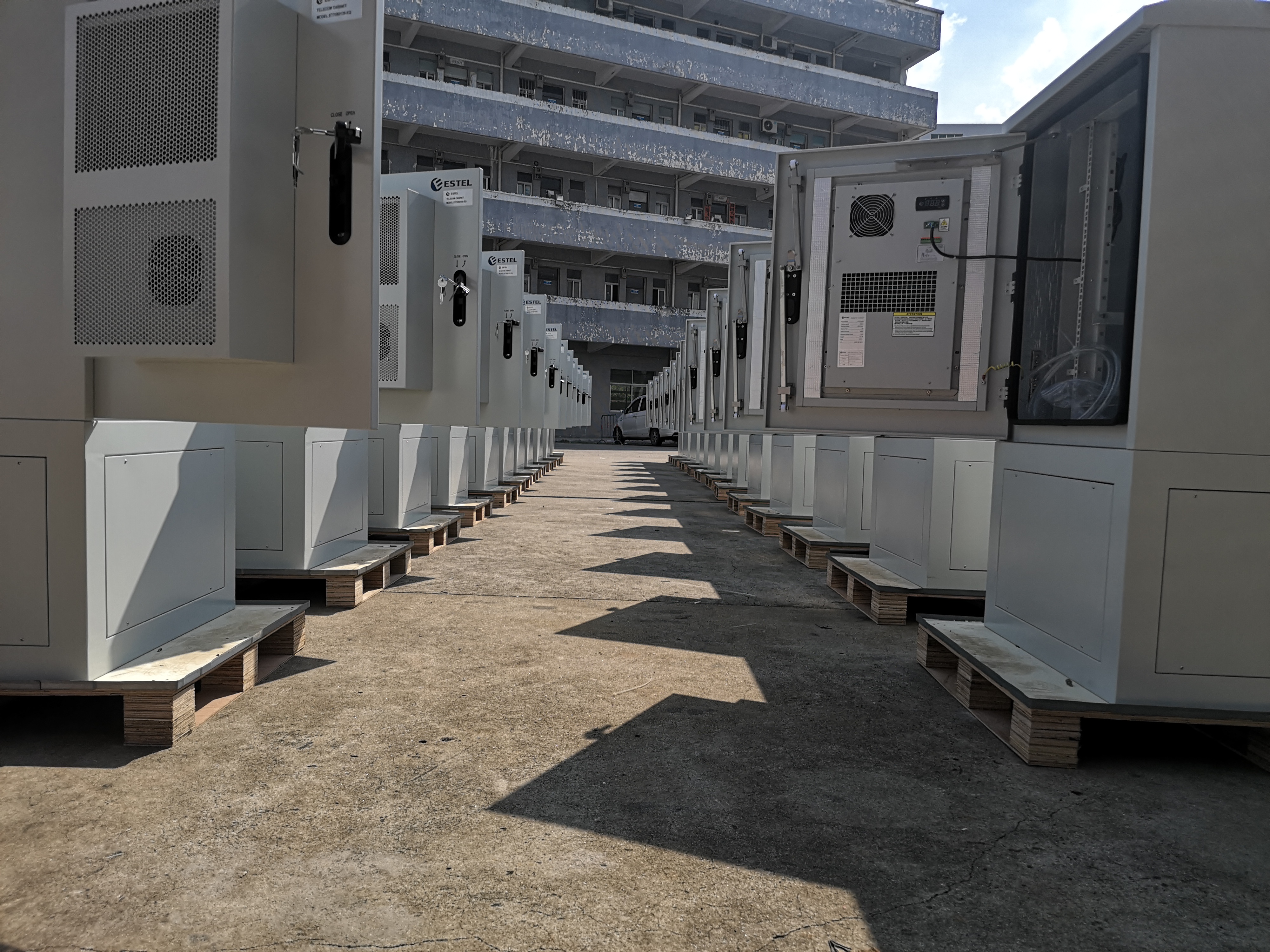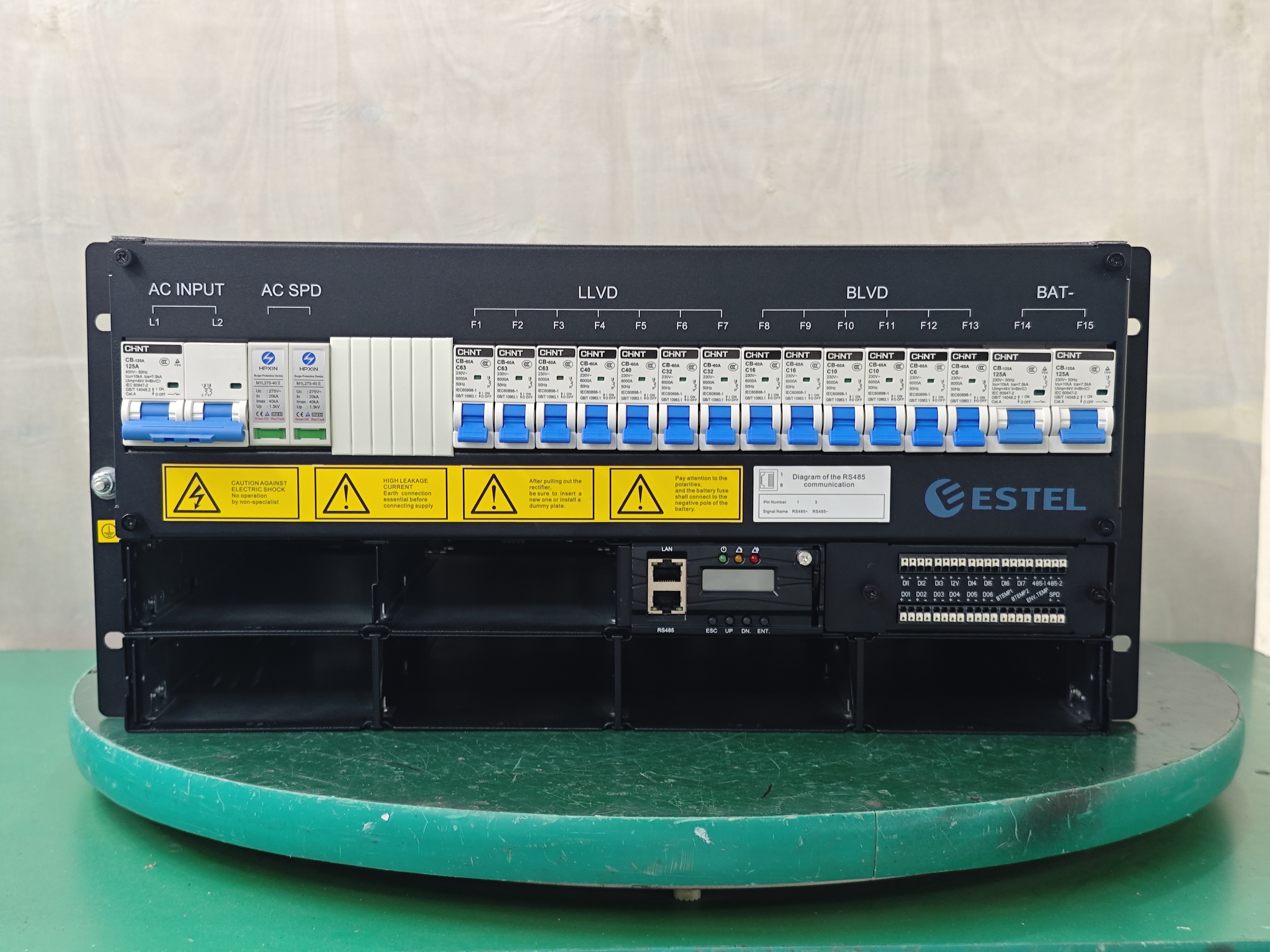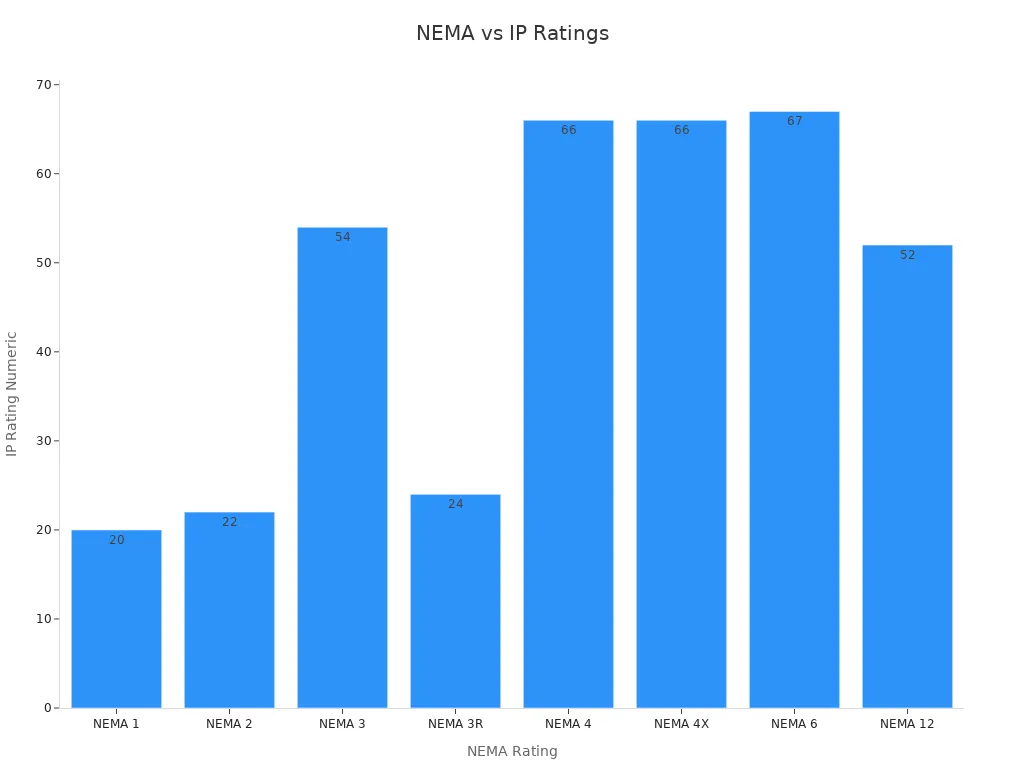How to Optimize Outdoor Telecom Cabinets with ESTEL Rectifier Modules

Optimizing outdoor telecom cabinets is crucial for maintaining reliable network performance, especially when incorporating rectifier modules for outdoor telecom cabinet solutions. These cabinets protect vital equipment from harsh environmental conditions and play a key role in expanding connectivity. For example:
They support external installations like rural broadband projects, which help bridge the digital divide.
Outdoor FTTx cabinets ensure improved network performance in underserved areas.
To enhance the efficiency and durability of these cabinets, rectifier modules for outdoor telecom cabinet applications offer a peak efficiency of 97.83% at 277 VAC. Proper installation of these modules improves power management and extends the lifespan of telecom systems. By ensuring your cabinet operates at its best, you can maximize performance and reduce maintenance needs.
Key Takeaways
Use ESTEL rectifier modules to save energy and lower costs.
Follow safety rules and check specs to install correctly.
Add good cooling systems to stop overheating and protect gear.
Test rectifier modules often to catch problems early.
Pick cabinets with the right ratings to shield from weather.
Overview of Outdoor Telecom Cabinets

Purpose and Functionality
Outdoor telecom cabinets play a vital role in modern telecommunications infrastructure. These cabinets house and protect sensitive equipment, ensuring uninterrupted network performance. They are specifically designed to withstand harsh environmental conditions, such as extreme heat, heavy rain, and snow. This durability makes them essential for outdoor installations, especially in remote or challenging locations.
The demand for outdoor telecom cabinets continues to grow. With the expansion of 5G networks and the rise of edge computing, the market is projected to grow at a compound annual growth rate (CAGR) of 13.6% from 2025 to 2032. This growth highlights their importance in supporting advanced telecommunications systems.
You can rely on these cabinets to maintain network reliability. They often include advanced cooling systems to regulate internal temperatures, preventing equipment failure. Their robust construction, typically using materials like galvanized steel or aluminum, ensures resistance to corrosion, dust, and moisture. These features make outdoor telecom cabinets indispensable for maintaining consistent connectivity in diverse environments.
Key Components
Outdoor telecom cabinets consist of several critical components that work together to ensure optimal performance:
Energy storage batteries: Lithium-ion batteries are commonly used due to their high energy density and long cycle life.
Battery modules: These are configured in series and parallel to meet specific capacity requirements.
Thermal management systems: Air or liquid cooling systems regulate internal temperatures to prevent overheating.
Power conversion systems (PCS): These include inverters, transformers, and controllers to convert DC electricity into AC.
Battery management systems (BMS): These monitor voltage and temperature, preventing overcharging and overheating.
Safety features: Circuit breakers and fire suppression systems enhance reliability and protect against potential hazards.
Each component plays a crucial role in ensuring the cabinet operates efficiently. By understanding these elements, you can better appreciate how outdoor telecom cabinets support modern telecommunications networks.
Benefits of ESTEL Rectifier Modules
Unique Features
ESTEL rectifier modules stand out due to their advanced design and innovative technology. These modules are compact yet powerful, offering high power density that saves space in your outdoor telecom cabinets. With a peak efficiency of up to 97.83%, they minimize energy loss and reduce operational costs.
Another key feature is their wide input voltage range, which ensures stable performance even in areas with fluctuating power supply. This makes them ideal for remote installations where power reliability can be a challenge. Additionally, these modules come equipped with intelligent monitoring systems. You can track performance metrics in real time, enabling proactive maintenance and reducing downtime.
Tip: Choosing rectifier modules with high efficiency and intelligent features can significantly enhance the reliability of your telecom network.
Advantages for Outdoor Cabinets
When you integrate ESTEL rectifier modules into your outdoor telecom cabinets, you unlock several benefits. These modules are designed to withstand harsh environmental conditions, including extreme temperatures and high humidity. Their robust construction ensures long-term durability, even in challenging outdoor settings.
The high efficiency of these rectifier modules for outdoor telecom cabinet applications translates to lower heat generation. This reduces the strain on cooling systems, improving overall energy efficiency. Furthermore, their modular design simplifies installation and maintenance. You can easily replace or upgrade individual modules without disrupting the entire system.
Another advantage is their compatibility with various power systems. Whether your cabinet operates on AC or DC power, ESTEL rectifier modules can seamlessly integrate, ensuring uninterrupted performance. This flexibility makes them a versatile choice for diverse telecom applications.
By optimizing your outdoor telecom cabinets with ESTEL rectifier modules, you can enhance power management, reduce energy costs, and extend the lifespan of your equipment.
Installing Rectifier Modules for Outdoor Telecom Cabinet

Preparation and Safety
Before installing rectifier modules for outdoor telecom cabinets, preparation and safety should be your top priorities. Start by reviewing the technical specifications of the rectifier modules to ensure compatibility with your telecom cabinet. Verify that the cabinet meets the necessary cooling and electrical requirements. For instance, effective cooling requires a flow rate close to 140 CFM, as this helps dissipate the heat generated by the rectifier and other components. Additionally, consider the impact of solar heating loads on the cabinet. Proper thermal management prevents overheating and extends the lifespan of electronic components.
Safety compliance is equally important. Always adhere to electrical installation guidelines and wear appropriate personal protective equipment (PPE). Disconnect the power supply before beginning the installation to avoid electrical hazards. Ensure that the workspace is clean and free of debris to minimize risks during the process.
Tip: Double-check all safety measures and technical requirements before proceeding with the installation. This reduces the likelihood of errors and ensures a smooth setup process.
Placement and Mounting
Proper placement and mounting of rectifier modules are crucial for optimal performance. Begin by assessing the electrical and cooling requirements of your facility. Ensure that the cabinet can handle the power needs of the rectifier modules. Install an effective cooling system, such as water cooling, to manage heat dissipation efficiently.
Position the rectifier modules in a location that is both accessible and safe for maintenance. Avoid placing them in areas prone to water exposure or extreme temperatures. Adhering to safety compliance guidelines for electrical installations is essential. For example, positioning the rectifier close to the plating bath minimizes energy losses and enhances efficiency.
When mounting the modules, use the appropriate brackets and fasteners to secure them firmly in place. This prevents vibrations and ensures stability during operation. Follow the manufacturer’s instructions for mounting to avoid damaging the modules or the cabinet.
Checklist for Placement and Mounting:
Assess power and cooling requirements.
Install a reliable cooling system.
Choose an accessible and safe location.
Secure modules with proper mounting hardware.
Wiring and Connections
Wiring and connections play a critical role in the functionality of rectifier modules for outdoor telecom cabinets. Use plenum-rated cables for all communication wiring, as these are designed to resist fire and meet safety standards. Avoid using PVC wiring unless it has been explicitly approved. Organize and label all cables to simplify maintenance and troubleshooting.
Install network distribution panels with adequate clearance and grounding to ensure stable connections. Proper grounding prevents electrical surges and protects sensitive equipment. Follow the manufacturer’s guidelines for cable termination to maintain the integrity of the connections.
Additionally, ensure that the wiring layout minimizes interference and maximizes efficiency. Keep power cables separate from communication cables to reduce the risk of signal disruption. Regularly inspect the connections for signs of wear or damage, and replace any faulty components promptly.
Note: A well-organized wiring system not only improves performance but also simplifies future upgrades and maintenance tasks.
Testing and Verification
Testing and verification ensure that your rectifier modules for outdoor telecom cabinet installations function as intended. This step helps you identify potential issues early, reducing the risk of system failures. By following a structured approach, you can confirm that your setup meets performance and safety standards.
Step 1: Power-On Testing
Begin by powering on the rectifier modules. Observe the startup sequence to ensure all indicators and displays function correctly. Check for any error messages or warning lights. If the system includes an intelligent monitoring feature, use it to verify that the modules are operating within the specified parameters.
Tip: Keep a checklist of expected startup behaviors to streamline this process and avoid overlooking critical details.
Step 2: Load Testing
Simulate real-world conditions by connecting the rectifier modules to a test load. Gradually increase the load to the maximum rated capacity while monitoring performance metrics such as voltage stability and heat generation. This step confirms that the modules can handle the demands of your telecom cabinet without compromising efficiency.
Key Metrics to Monitor During Load Testing:
Voltage output consistency
Current flow stability
Heat dissipation efficiency
Step 3: Environmental Testing
Outdoor telecom cabinets often face extreme weather conditions. Test the rectifier modules under simulated environmental stresses, such as high temperatures, humidity, and dust exposure. This ensures that the modules can maintain reliable performance in challenging outdoor settings.
Note: Use a controlled environment to replicate these conditions safely and accurately.
Step 4: Safety Verification
Inspect all wiring and connections to confirm they meet safety standards. Verify that grounding systems are properly installed to prevent electrical surges. Test the cabinet’s circuit breakers and fire suppression systems to ensure they activate as needed during emergencies.
Step 5: Performance Validation
Finally, compare the test results against the manufacturer’s specifications. Ensure that the rectifier modules meet or exceed the expected performance benchmarks. Document all findings for future reference and maintenance planning.
Reminder: Regular testing and verification help you maintain optimal system performance and extend the lifespan of your equipment.
Optimizing Outdoor Telecom Cabinets
Cooling and Ventilation
Effective cooling and ventilation systems are essential for maintaining the optimal performance of outdoor telecom cabinets. Without proper temperature regulation, equipment can overheat, leading to reduced efficiency and potential failures. You can prevent these issues by implementing advanced cooling solutions such as ventilation fans, heat exchangers, and HVAC systems. These systems stabilize internal temperatures, reduce condensation, and protect against corrosion.
For example, ventilation fans improve airflow, while heat exchangers transfer excess heat away from sensitive components. HVAC systems provide precise temperature control, ensuring that your cabinet operates within safe limits. By investing in these technologies, you can significantly extend the lifespan of your equipment and minimize the risk of costly downtime.
Tip: Regularly inspect and maintain your cooling systems to ensure they function efficiently. This proactive approach helps you avoid unexpected failures and maintain consistent network performance.
Ingress Protection Standards
Outdoor telecom cabinets face constant exposure to environmental hazards such as dust, water, and extreme weather conditions. To safeguard your equipment, you must ensure that your cabinets meet stringent ingress protection (IP) standards. These standards classify the level of protection provided against solid particles and liquids.
For instance, an IP65-rated cabinet offers complete protection against dust and resistance to low-pressure water jets. Higher ratings, such as IP67, provide even greater protection, including temporary immersion in water. By selecting cabinets with appropriate IP ratings, you can shield your equipment from environmental damage and maintain reliable network performance.
Note: Always verify the IP rating of your cabinet before installation. This ensures that it meets the specific requirements of your operating environment.
Power Distribution Efficiency
Optimizing power distribution within your outdoor telecom cabinets is crucial for reducing energy costs and improving overall efficiency. High-density power distribution units (PDUs) play a key role in achieving this goal. These devices distribute power evenly across all components, reducing the risk of downtime and ensuring efficient operation.
You can also enhance power distribution efficiency by monitoring key metrics such as power usage effectiveness (PUE) and power quality indicators. PUE measures the total energy used by your cabinet compared to the energy consumed by IT equipment. Lower PUE values indicate better energy efficiency. Intelligent PDUs equipped with environmental monitoring capabilities can track temperature and humidity levels, alerting you to unsafe conditions for proactive management.
Metric | Description |
|---|---|
Power Usage Effectiveness | High-density PDUs improve PUE values, indicating better energy efficiency in power usage. |
Load Balancing Capabilities | Cabinet PDUs distribute power evenly, reducing the risk of downtime and ensuring efficient operation. |
Environmental Monitoring | Intelligent PDUs track temperature and humidity, alerting users to unsafe conditions for proactive management. |
Power Quality Indicators | Metrics like crest factor and power factor help assess the efficiency of power usage. |
Reminder: Regularly inspect and maintain your PDUs to ensure optimal performance. Addressing issues such as human error, insufficient redundancy, and equipment failures can prevent power outages and enhance system reliability.
Ensuring Compliance with Standards
NEMA and IP Ratings
Ensuring compliance with NEMA (National Electrical Manufacturers Association) and IP (Ingress Protection) ratings is essential for outdoor telecom cabinets. These ratings determine the level of protection your cabinet provides against environmental factors like dust, water, and physical damage. By selecting cabinets that meet these standards, you can safeguard your equipment and maintain reliable network performance.
NEMA ratings often correspond to specific IP ratings, making it easier to understand their protective capabilities. For example, a NEMA 4-rated cabinet offers the same level of protection as an IP66-rated cabinet, shielding equipment from dust and powerful water jets. The table below highlights the equivalence between NEMA and IP ratings:
NEMA Rating | Equivalent IP Rating |
|---|---|
NEMA 1 | IP20 |
NEMA 2 | IP22 |
NEMA 3 | IP54 |
NEMA 3R | IP24 |
NEMA 4 | IP66 |
NEMA 4X | IP66 (with added corrosion resistance) |
NEMA 6 | IP67 |
NEMA 12 | IP52 |

Tip: Always verify the NEMA or IP rating of your cabinet to ensure it meets the environmental challenges of your installation site.
Other Industry Standards
Compliance with additional industry standards ensures the reliability and safety of your telecom infrastructure. Organizations like Intertek provide certifications for safety and performance, confirming that your cabinets meet nationally recognized standards. These certifications reduce the risk of equipment failure and downtime.
Materials and cooling methods also play a significant role in compliance. Metal cabinets offer superior strength and durability, making them ideal for outdoor applications. Plastic cabinets, on the other hand, are lightweight and corrosion-resistant, suitable for indoor settings. The table below outlines the advantages of different materials:
Material Type | Advantages | Applications |
|---|---|---|
Metal | Strength, durability, excellent protection against physical damage and environmental factors | Outdoor applications, areas prone to vandalism or harsh weather |
Plastic | Lightweight, cost-effective, resistant to corrosion | Indoor settings, regions with minimal corrosive factors |
Cooling systems must also meet performance metrics to ensure efficient operation. Advanced air cooling and water/PG touch cooling are two common methods. The table below compares their key metrics:
Cooling Method | Key Performance Metrics | Ambient Temperature Requirement |
|---|---|---|
Advanced Air Cooling | Requires air temperature significantly lower than room temperature (4°C) for optimal performance | Below 4°C |
Water/PG Touch Cooling | Utilizes a control system to adjust water flow based on load, ensuring efficient cooling | Varies based on load |
Reminder: Regularly inspect your cabinets to ensure they comply with these standards. This proactive approach helps you maintain optimal performance and extend the lifespan of your equipment.
Installing ESTEL rectifier modules for outdoor telecom cabinets involves careful preparation, proper placement, secure wiring, and thorough testing. These steps ensure your system operates efficiently and reliably. By optimizing your cabinets, you benefit from enhanced performance, reduced energy costs, and extended equipment lifespan.
The advanced features of these rectifier modules, such as high efficiency and modular design, make them ideal for telecom systems. For instance, their efficiency reduces energy costs, while their scalability adapts to changing power demands. The table below highlights key metrics that demonstrate their effectiveness:
Metric | Description | Benefit to Telecom Systems |
|---|---|---|
Efficiency | Delta rectifiers outperform conventional models. | Reduces energy costs and improves efficiency. |
Reliability | Operates across a broad voltage range. | Ensures continuous operation of telecom systems. |
Scalability | Modular design allows easy scaling of power capacity. | Adapts to changing power demands. |
You can achieve optimal results by following the outlined steps and leveraging these performance metrics. Take action today to enhance your telecom infrastructure and ensure long-term reliability.
FAQ
What makes ESTEL rectifier modules ideal for outdoor telecom cabinets?
ESTEL rectifier modules offer high efficiency (up to 97.83%) and robust durability. Their compact design saves space, while intelligent monitoring ensures reliable performance. These features make them perfect for outdoor environments with fluctuating power conditions.
Tip: Choose modules with wide input voltage ranges for better adaptability.
How do you ensure proper cooling in outdoor telecom cabinets?
Install ventilation fans, heat exchangers, or HVAC systems to regulate internal temperatures. Regularly inspect these systems to prevent overheating and condensation.
Example: Use heat exchangers to transfer excess heat away from sensitive components.
Reminder: Clean filters periodically for optimal airflow.
Can ESTEL rectifier modules handle extreme weather conditions?
Yes, ESTEL rectifier modules are designed to withstand harsh environments. They operate efficiently in extreme temperatures and high humidity. Their robust construction ensures long-term reliability.
Note: Always verify the IP or NEMA rating of your cabinet for added protection.
How do you test rectifier modules after installation?
Perform power-on, load, and environmental tests. Monitor voltage stability, heat dissipation, and safety features like grounding. Compare results with manufacturer specifications to ensure compliance.
Checklist:
Verify startup sequence.
Simulate real-world loads.
Test under extreme conditions.
Why is compliance with NEMA and IP ratings important?
Compliance ensures your cabinet protects equipment from dust, water, and physical damage. NEMA and IP ratings classify the level of protection, helping you choose the right cabinet for your environment.
NEMA Rating | Equivalent IP Rating |
|---|---|
NEMA 4 | IP66 |
NEMA 6 | IP67 |
Reminder: Match the rating to your installation site’s challenges.
See Also
Exploring Outdoor Telecom Cabinet Designs from ESTEL
Essential Maintenance Advice for ESTEL Outdoor Cabinets
Safety Features of Customized ESTEL Outdoor Telecom Cabinets
Simplified Installation Guide for ESTEL Outdoor Cabinets
Essential Design Guidelines for ESTEL Outdoor Communication Cabinets
CALL US DIRECTLY
86-13752765943
3A-8, SHUIWAN 1979 SQUARE (PHASE II), NO.111, TAIZI ROAD,SHUIWAN COMMUNITY, ZHAOSHANG STREET, NANSHAN DISTRICT, SHENZHEN, GUANGDONG, CHINA


